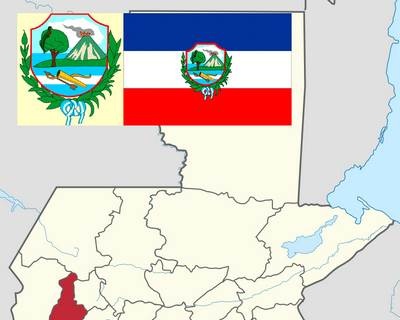|
 Quetzaltenango is one of the western departments of Guatemala, characterized by many tourist attractions and archaeological sites. It still preserves the traditions inherited by the Maya Quiche people during the colonial period and carried over to modern times. Quetzaltenango is one of the western departments of Guatemala, characterized by many tourist attractions and archaeological sites. It still preserves the traditions inherited by the Maya Quiche people during the colonial period and carried over to modern times.
The main areas of popular culture are folklore, folk festivals and dances, national costumes, crafts and regional cuisine based on local agricultural products - coffee, oil palm, corn, rice, vegetables and sesame seeds.
Conventionally, the food of the traditional cuisine of the department can be divided into two parts: the first includes stews with vegetables in a thick rich broth or sauce, which are served in a deep clay bowl, and the second - dishes cooked in a banana leaf and served on it. So, the best dishes of the first type are:
• hakon (jocon)recognized as the intangible cultural heritage of the nation in 2007. Consists of chunks of chicken in a green sauce of physalis, green chili, onion feathers and cilantro;
• pepian - the oldest dish in culinary history, born from the fusion of Mayan and Spanish cultures, a stew (beef, pork or chicken) with a spicy stew of squash, pears, carrots, potatoes and corn on the cob, served with hot corn tortillas and sauce Chile;
• caldo de panza - beef peritoneum in broth, to which a large amount of tomatoes, onions, pods of sweet and hot peppers are added, oregano and greens, and sometimes cabbage and corn;
• caldo de pollo – chicken broth soup with potatoes, carrots, garlic, chayote, corn cobs, noodles and herbs;
• caldo de pata - thick soup with beef shank, large pieces of cassava and carrots, tomatoes, chayote, red onion, garlic, cilantro and spices.
A very popular type of food in Quetzaltenango is tamales... From the Nahuatl language, the word tamal is translated as delicious bread, so they are served with almost all dishes. These culinary products are like envelopes made from banana leaves or broad leaves of other plants and filled with a variety of mealy fillings. They have their own names depending on the content. A special role in the preparation of tamales is played by the preparation of the leaves - they must be well washed, peeled and softened in boiling water for better curling, and if these are banana leaves, then they are pre-cut into even rectangles. Tamali is steamed in a special saucepan called tamalera:
• paches - tamali, eaten on Thursdays, with potato dough, to which are added pieces of chicken meat, chopped french loaf, tomatoes and physalis, ground pumpkin seeds and one small pod of hot pepper for each tamal; paches - tamali, eaten on Thursdays, with potato dough, to which are added pieces of chicken meat, chopped french loaf, tomatoes and physalis, ground pumpkin seeds and one small pod of hot pepper for each tamal;
• rice tamali (tamales de arroz) - contain pieces of pork, rice, squash seeds, tomatoes, chili, seasoned with saffron, sesame and cinnamon;
• tamalillo de chipilin - tamal with corn dough, into which the leaves of the aromatic plant crotalaria, lard, cheese, onions, tomatoes, chili and herbs are kneaded;
• chuchitos - tamali in corn leaves filled with corn dough with lard, pork or beef, tomato, chili and annatto.
The traditional drinks of Quetzaltenango are served in a bowl called hikara. Initially, such bowls were made from the shell of the fruit of the calabash tree, but then clay, wood, and faience began to serve as materials. The ancient Mayans drank chocolate from hikar, while the modern assortment of regional drinks includes:
• homemade fruit liqueur (caldo de frutas) from a mixture of quince, apple, cherry, peach, pear, sapote, mombin and mulberry;
• rompope - Guatemalan version of eggnog drink with milk, egg yolks, nuts, rum, sugar and cinnamon;
• atol - Mayan ceremonial drink, obtained by boiling corn kernels with sugar and cinnamon.
Elena
|
 Quetzaltenango is one of the western departments of Guatemala, characterized by many tourist attractions and archaeological sites. It still preserves the traditions inherited by the Maya Quiche people during the colonial period and carried over to modern times.
Quetzaltenango is one of the western departments of Guatemala, characterized by many tourist attractions and archaeological sites. It still preserves the traditions inherited by the Maya Quiche people during the colonial period and carried over to modern times.






